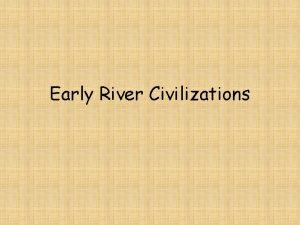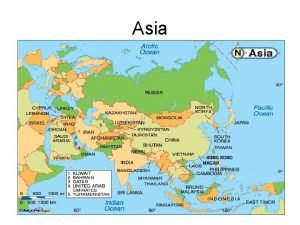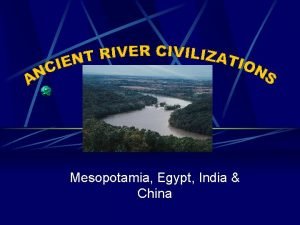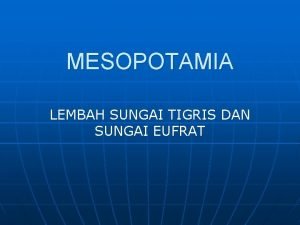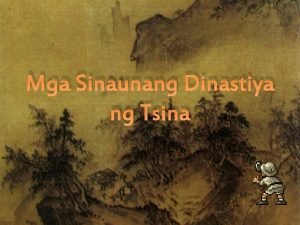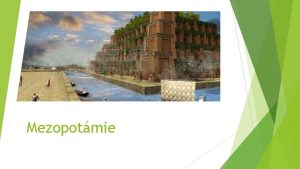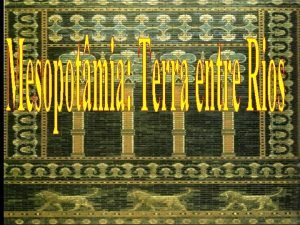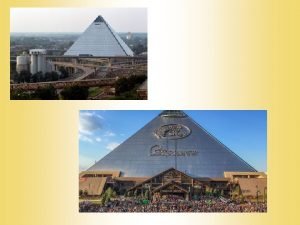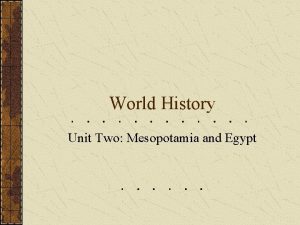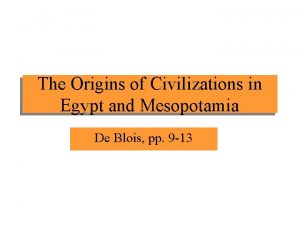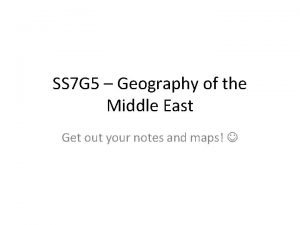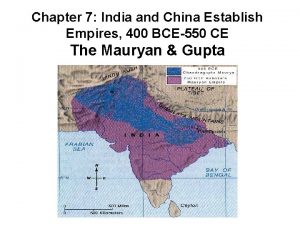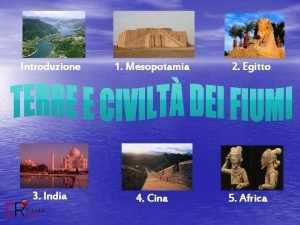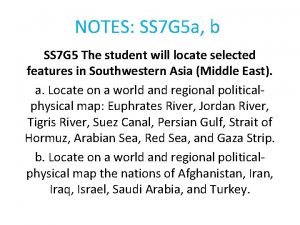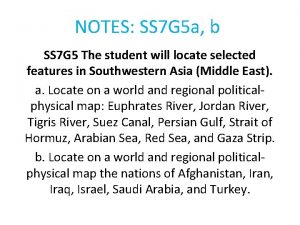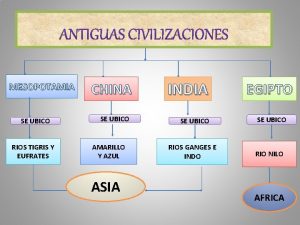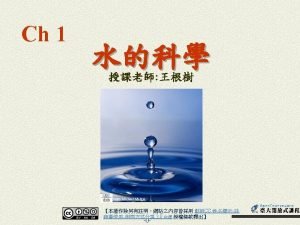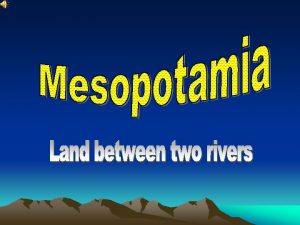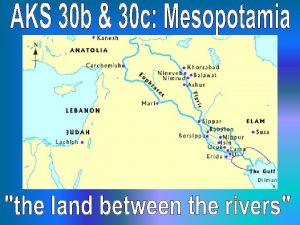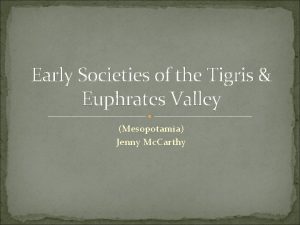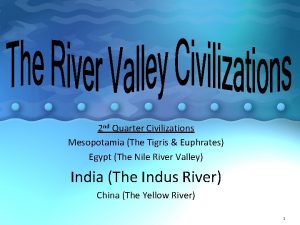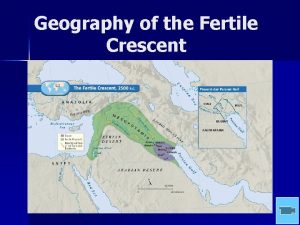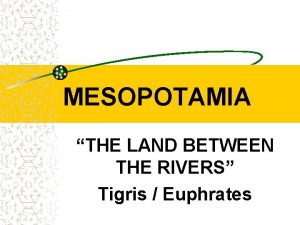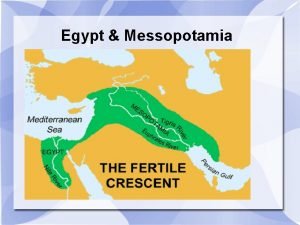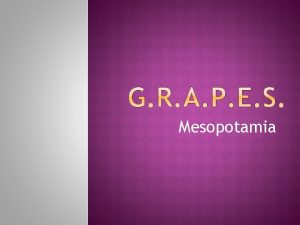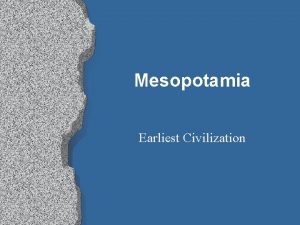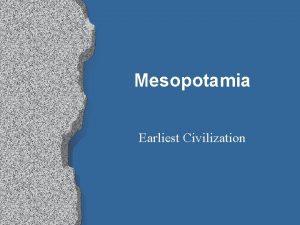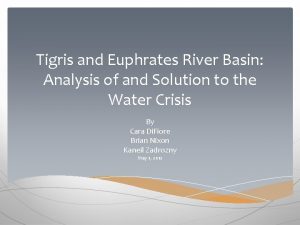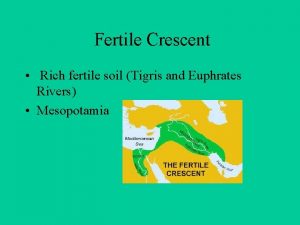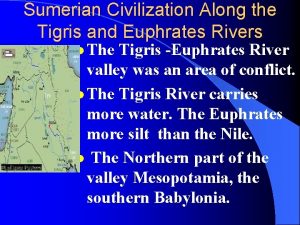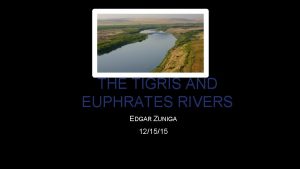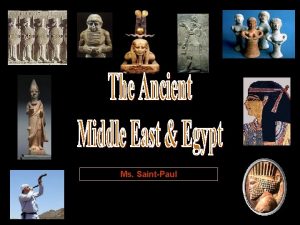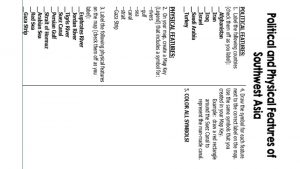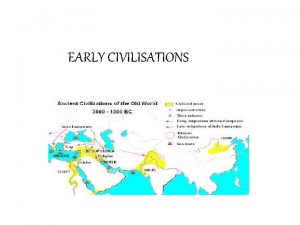Mesopotamia Egypt India China MESOPOTAMIA Tigris and Euphrates



















- Slides: 19

Mesopotamia, Egypt, India & China

MESOPOTAMIA: Tigris and Euphrates River Valley

Geographic Setting Fertile Crescent- region of good farmland created by the Tigris and Euphrates Rivers, stretches from the Persian Gulf to the Mediterranean Known as “cradle of civilization”

Sumerian Civilization Religion- Sumerians were polytheistic- believed in many gods and goddesses Built large pyramid-like temples called ziggurats Government- each city-state had hereditary ruler Social Structure- highest class consisted of ruling family, officials and priests, middle class: merchants and artisans and lower class of peasant farmers Economy- grew rich from trade Contributions- built first wheeled vehicles, cuneiform, early writing system


Egypt: Nile River

Geographic Setting Mostly desert Yearly floods soaked the land left rich deposits of silt Highway for travel

Egyptian Civilization Religion- polytheistic. Amon-Re was the chief god. Believed in life after death, mummification Government- pharaoh- Egyptian ruler, both god and king Pyramids were built for the mummies of pharaohs Social structure- pharaoh was highest, next came priests, then nobles, then craftspeople and merchants. Last were the peasant farmers Contributions-Ability to diagnose illnesses and perform surgery. Developed a calendar much like the one we use today


India: Indus River Valley


Geographic Setting Wedge shaped subcontinent that extends into the Indian Ocean Surrounded on the north and northwest by mountains, which limited India’s contacts with other cultures Monsoon- winds that bring rain every summer. Indians depended on these to grow their crops

Indus Valley Cities Harappa and Mohenjodaro two main cities Roads were laid out in a grid pattern Most people were farmers, few merchants Traveled far to trade with cities of Sumer


China: Yellow River and Yangzi

Geographic Setting Chinese civilization grew in river valleys of the Yellow (Huang He) and Yangzi Rivers Mountains, jungles, desert and ocean isolated the Chinese culture Chinese thought their civilization was the center of the earth, called Middle Kingdom Despite its isolation, China traded with the Middle East and even beyond


Government The Shang gained control of northern China and controlled most of the land The Shang set up the first dynasty, or ruling family

Created by Naomi
 River valley civilization
River valley civilization Most populated continent
Most populated continent Tigris and euphrates river
Tigris and euphrates river Map of mesopotamia egypt india and china
Map of mesopotamia egypt india and china Sungai tigris dan sungai eufrat
Sungai tigris dan sungai eufrat Mga dinastiya sa sinaunang tsina
Mga dinastiya sa sinaunang tsina Eufrat a tigris mesopotamia
Eufrat a tigris mesopotamia Sociedade mesopotamica
Sociedade mesopotamica Ubicacion geografica de egipto y mesopotamia
Ubicacion geografica de egipto y mesopotamia Upper egypt and lower egypt
Upper egypt and lower egypt Site:slidetodoc.com
Site:slidetodoc.com Egypt vs mesopotamia
Egypt vs mesopotamia Euphrates river map
Euphrates river map Comparative development experiences of india and china
Comparative development experiences of india and china Chapter 7 india and china establish empires
Chapter 7 india and china establish empires Mesopotamia india
Mesopotamia india Tigris river location
Tigris river location Jordan river southwest asia map
Jordan river southwest asia map Tigris alacsonyabb rendszertani kategória
Tigris alacsonyabb rendszertani kategória En que continente se ubica mesopotamia
En que continente se ubica mesopotamia
